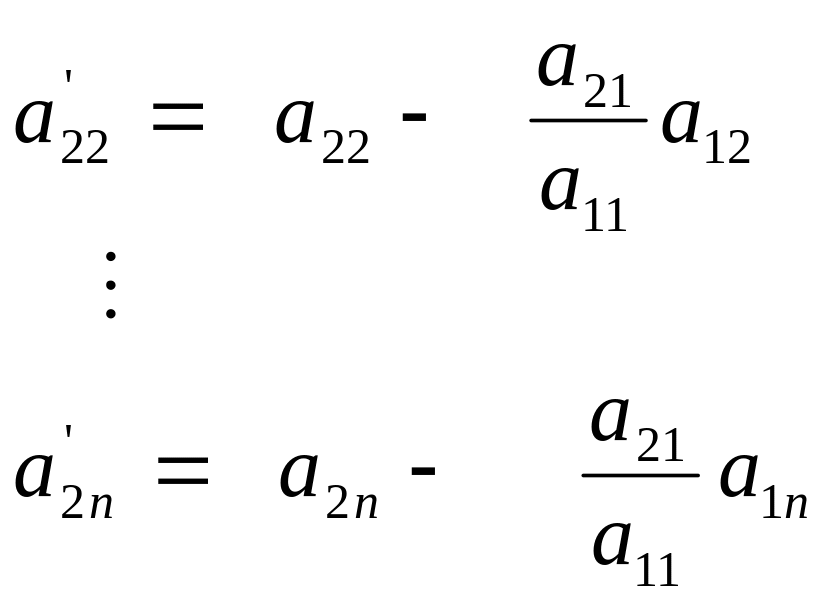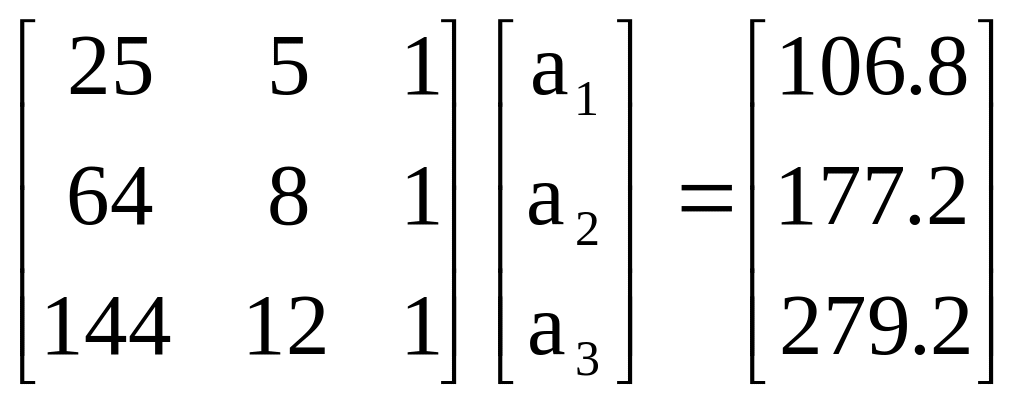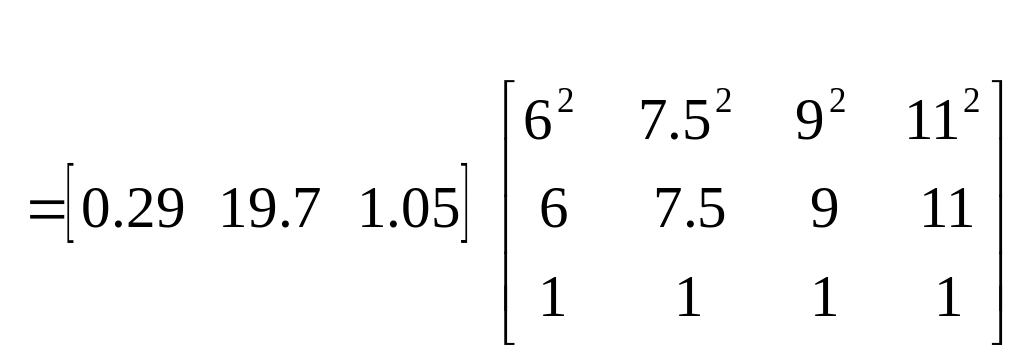
- •How are a set of equations solved numerically?
- •Forward Elimination of Unknowns:
- •Back Substitution:
- •What are the techniques for improving Naïve Gauss Elimination Method?
- •How does Gaussian elimination with partial pivoting differ from Naïve Gauss elimination?
- •Can we use Naïve Gauss Elimination methods to find the determinant of a square matrix?
- •What if I cannot find the determinant of the matrix using Naive Gauss Elimination method, for example, if I get division by zero problems during Naïve Gauss Elimination method?
- •Key Terms:
Gaussian
Elimination SIMULTANEOUS LINEAR EQUATIONS 04.06.
Chapter 04.06
Gaussian Elimination
After reading this chapter, you should be able to:
Solve a set of simultaneous linear equations using Naïve Gauss Elimination,
Learn the pitfalls of Naïve Gauss Elimination Method,
Understand the effect of round off error on a solving set of linear equation by Naïve Gauss Elimination Method,
Learn how to modify Naïve Gauss Elimination method to Gaussian Elimination with Partial Pivoting Method to avoid pitfalls of the former method,
Find the determinant of a square matrix using Gaussian Elimination,
Understand the relationship between determinant of co-efficient matrix and the solution of simultaneous linear equations.
How are a set of equations solved numerically?
One of the most popular techniques for solving simultaneous linear equations is the Gaussian elimination method. The approach is designed to solve a general set of n equations and n unknowns
![]()
![]()
. .
. .
. .
![]()
Gaussian elimination consists of two steps
Forward Elimination of Unknowns: In this step, the unknown is eliminated in each equation starting with the first equation. This way, the equations are “reduced” to one equation and one unknown in each equation.
Back Substitution: In this step, starting from the last equation, each of the unknowns is found.
Forward Elimination of Unknowns:
In the first step of forward elimination, the first unknown, x1 is eliminated from all rows below the first row. The first equation is selected as the pivot equation to eliminate x1. So, to eliminate x1 in the second equation, one divides the first equation by a11 (hence called the pivot element) and then multiply it by a21. That is, same as multiplying the first equation by a21/ a11 to give
![]()
Now, this equation can be subtracted from the second equation to give
![]()
or
![]()
where

This procedure of eliminating
![]() ,
is now repeated for the third equation to the nth equation
to reduce the set of equations as
,
is now repeated for the third equation to the nth equation
to reduce the set of equations as
![]()
![]()
. . .
. . .
. . .
![]()
This is the end of the first step of forward elimination. Now for the
second step of forward elimination, we start with the second equation
as the pivot equation and
![]() as the pivot element. So, to eliminate x2
in the third equation, one divides the second equation by
(the pivot element) and then multiply it by
as the pivot element. So, to eliminate x2
in the third equation, one divides the second equation by
(the pivot element) and then multiply it by
![]() .
That is, same as multiplying the second equation by
.
That is, same as multiplying the second equation by
![]() and subtracting from the third equation. This makes the coefficient
of x2 zero in the third equation. The same
procedure is now repeated for the fourth equation till the nth
equation to give
and subtracting from the third equation. This makes the coefficient
of x2 zero in the third equation. The same
procedure is now repeated for the fourth equation till the nth
equation to give
![]()
. .
. .
. .
![]()
The next steps of forward elimination are conducted by using the third equation as a pivot equation and so on. That is, there will be a total of (n-1) steps of forward elimination. At the end of (n-1) steps of forward elimination, we get a set of equations that look like
![]()
![]()
![]()
. .
. .
. .
![]()
Back Substitution:
Now the equations are solved starting from the last equation as it has only one unknown.

Then the second last equation, that is the (n-1)th equation, has two unknowns - xn and xn-1, but xn is already known. This reduces the (n-1)th equation also to one unknown. Back substitution hence can be represented for all equations by the formula
 for i = n – 1, n – 2,…,
for i = n – 1, n – 2,…,![]()
and![]()
Example 1
The upward velocity of a rocket is given at three different times in the following table
-
Time, t
Velocity, v
s
m/s
5
106.8
8
177.2
12
279.2
The velocity data is approximated by a polynomial as
![]()
The coefficients
![]() for the above expression were found in Chapter 5 to be given by
for the above expression were found in Chapter 5 to be given by

Find the values of a1, a2,
a3 using Naïve Guass Elimination. Find the
velocity at
![]() seconds.
seconds.
Solution
Forward Elimination of Unknowns: Since there are three equations, there will be two steps of forward elimination of unknowns.
First step: Divide Row 1 by 25 and then multiply it by 64
![]() [Row
1]
[Row
1]
![]() 2.56
gives Row 1 as
2.56
gives Row 1 as
![]()
Subtract the result from Row 2

Divide Row 1 by 25 and then multiply it by 144
![]() [Row
1]
5.76
gives Row 1 as
[Row
1]
5.76
gives Row 1 as
![]()
Subtract the result from Row 3

Second step: We now divide Row 2 by –4.8 and then multiply by –16.8
![]() [Row
2]
3.5 gives Row 2 as
[Row
2]
3.5 gives Row 2 as
![]()
Subtract the result from Row 3

Back substitution: From the third equation
![]()
![]()
![]()
Substituting the value of a3 in the second equation,
![]()
![]()
![]()
![]()
Substituting the value of![]() in
the first equation,
in
the first equation,
![]()
![]()
![]()
![]()
Hence the solution vector is

The polynomial that passes through the three data points is then
![]()
![]()
Since we want to find the velocity at
![]() seconds, we could simply substitute each value of
seconds, we could simply substitute each value of
![]() in
in
![]() and find the corresponding velocity. For example, at
and find the corresponding velocity. For example, at
![]()
![]()
However we could also find all the needed values of velocity at t = 6, 7.5, 9 and 11 seconds using matrix multiplication.

So if we want to find
![]() it is given by
it is given by
![]()


![]()
![]()
![]()
![]()
![]()
Example 2
Use Naïve Gauss Elimination to solve
![]()
![]()
![]()
Use six significant digits with chopping in your calculations.
Solution
Working in the matrix form

![]() =
=

Forward Elimination of Unknowns
Dividing Row 1 by 10 and multiplying by –3, that is, multiplying Row 1 by -0.3, and subtract it from Row 2 would eliminate a21,
 =
=
Again dividing Row 1 by 10 and multiplying by 5, that is, multiplying Row 1 by 0.5, and subtract it from Row 3 would eliminate a31,

![]() =
=
This is the end of the first step of forward elimination.
Now for the second step of forward elimination, we would use Row 2 as the pivot equation and eliminate Row 3 – Column 2. Dividing Row 2 by –0.001 and multiplying by 2.5, that is multiplying Row 2 by –2500, and subtracting from Row 3 gives
 =
=

This is the end of the forward elimination steps.
Back substitution
We can now solve the above equations by back substitution. From the third equation,
![]()
![]()
![]()
Substituting the value of x3 in the second equation
![]()

![]()
![]()
![]()
Substituting the value of x3 and x2 in the first equation,
![]()
![]()
![]()
![]()
Hence the solution is

Are there any pitfalls of Naïve Gauss Elimination Method?
Yes, there are two pitfalls of Naïve Gauss Elimination method.
Division by zero:
It is possible that division by zero may occur during forward elimination steps. For example for the set of equations
![]()
![]()
![]()
during the first forward elimination step, the coefficient of x1 is zero and hence normalization would require division by zero.
Round-off error:
Naïve Gauss Elimination Method is prone to round-off errors. This is true when there are large numbers of equations as errors propagate. Also, if there is subtraction of numbers from each other, it may create large errors. See the example below.
Example 3
Remember the previous example where we used Naïve Gauss Elimination to solve
using six significant digits with chopping in your calculations. Repeat the problem, but now use five significant digits with chopping in your calculations.
Solution
Writing in the matrix form
=
Forward Elimination of Unknowns
Dividing Row 1 by 10 and multiplying by –3, that is, multiplying Row 1 by -0.3, and subtract it from Row 2 would eliminate a21,
=
Again dividing Row 1 by 10 and multiplying by 5, that is, multiplying the Row 1 by 0.5, and subtract it from Row 3 would eliminate a31,
=
This is the end of the first step of forward elimination.
Now for the second step of forward elimination, we would use Row 2 as the pivoting equation and eliminate Row 3 – Column 2. Dividing Row 2 by –0.001 and multiplying by 2.5, that is, multiplying Row 2 by –2500, and subtract from Row 3 gives
=

This is the end of the forward elimination steps.
Back substitution
We can now solve the above equations by back substitution. From the third equation,
![]()
![]()
![]()
Substituting the value of x3 in the second equation

![]()
![]()
Substituting the value of x3 and x2 in the first equation,
![]()
![]()
=![]()
=![]()
=
![]()
Hence the solution is


Compare this with the exact solution of


